Istakhr
Q862251Istakhr: ancient Sasanian royal residence, very close to Persepolis; modern Takht-e Tavoos.
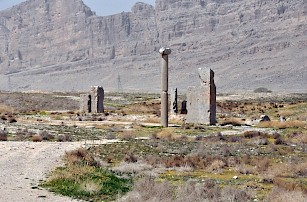
In 224 CE, a Persian nobleman named Ardašir, son of Pâpak, son of Sasan, dethroned the lawful ruler in Persia, Artabanus IV, king of the Parthian Empire. As one of his residences, the new ruler chose Istakhr: situared near Persepolis, the capital of the Achaemenids, it allowed the new Sasanian dynasty to identify itself with a glorious past. The builders of Istakhr often reused architectural elements from the monuments of Persepolis. The Achaemenid royal tombs of Naqš-e Rustam are not far from Istakhr too.
The city itself was not completely new: human occupation had started as early as the fourth millennium BCE, and the site was certainly occupied in the Bronze Age, by the Achaemenids, by the Seleucids (who used it as a mint town), and by the Parthians.
The city, which had strong walls, repulsed the first Arab attack in c.644, but was captured and sacked in c.650. Although the site was not really abandoned, most people moved to Shiraz (which was founded in 684). Today, Istakhr is nothing but a plain full of sherds, scattered architectural remains, and a few ruins. The walled-in area measured 1,400 x 650 meters and was surrounded by a ditch that was connected to the river Pulvar.
The modern name Takht-e Tavoos means "peacock throne".
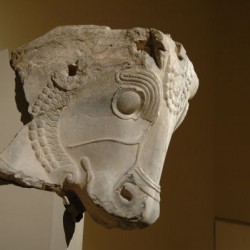 Istakhr, Achaemenid bull's head |
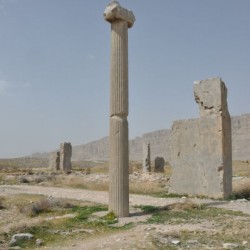 Istakhr, Column (from Persepolis) |
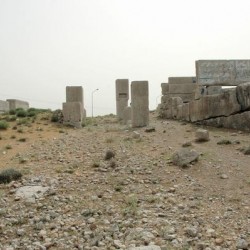 Istakhr, Gate |
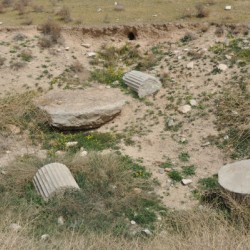 Istakhr, Column fragments |